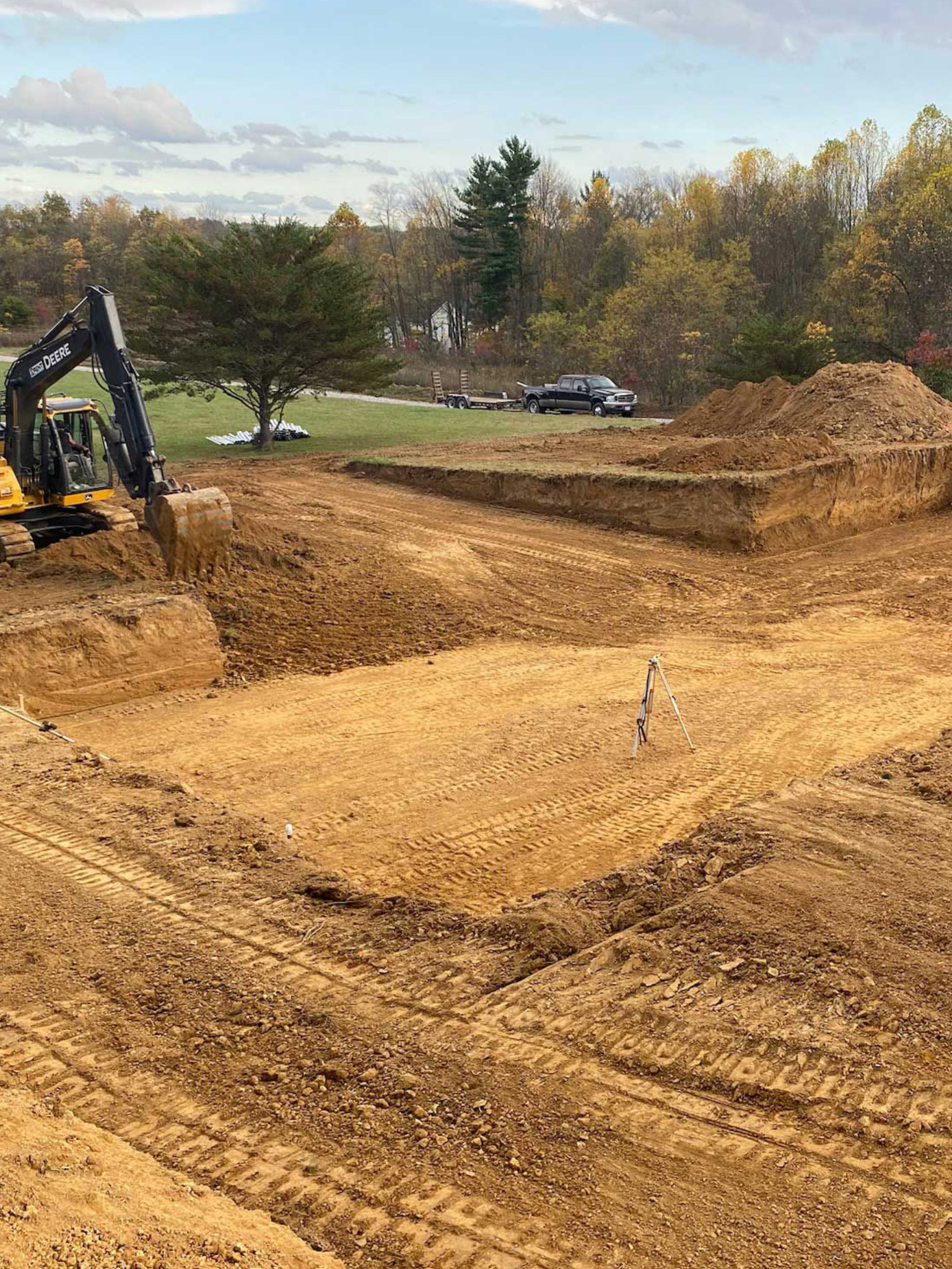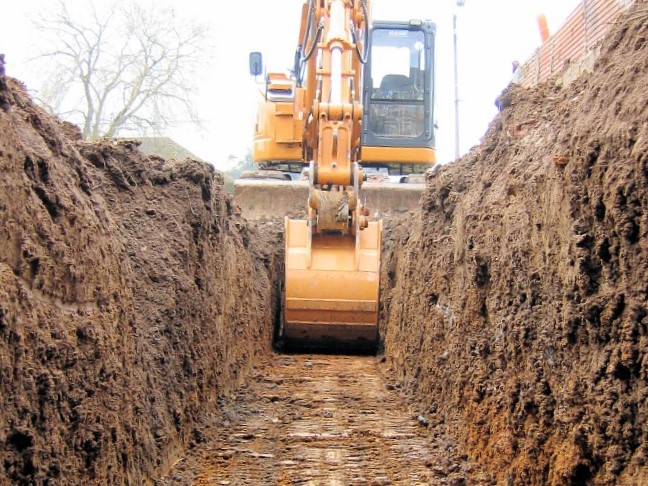Introducing the Art of Excavation: Pro Tips for Safe and Efficient Excavating
In the realm of excavation, the proficiency of risk-free and efficient excavating is an art kind that calls for understanding, precision, and adherence to well-known techniques. As soil is transformed and earth is moved, the complexities of excavation expose themselves, demanding a keen understanding of equipment, dirt structure, safety and security protocols, and ecological considerations. The knowledge required to browse these elements effectively can suggest the difference in between an effective excavation project and a prospective disaster. By unwinding the layers of this intricate procedure, a world of strategies and insights awaits those looking for to elevate their excavation skills to brand-new elevations.
Importance of Correct Tools
To make certain the security and efficiency of any excavation job, using the proper devices is vital. Excavation projects vary in scope and complexity, varying from tiny residential landscaping tasks to massive building tasks.
Excavators are basic pieces of equipment in any type of digging procedure. These flexible equipments been available in different dimensions to fit various job demands. Mini excavators are suitable for smaller jobs, while bigger excavators take on a lot more comprehensive tasks effectively. Backhoes are an additional important equipment type, integrating the functions of a loader and an excavator in one device. They are beneficial for jobs needing flexibility and maneuverability.
Apart from excavators, other vital devices consists of dump bulldozers, trucks, and trenchers. Discard trucks are necessary for removing and carrying excavated products, while trenchers are utilized for excavating slim and deep trenches. Bulldozers master tasks that call for pressing big amounts of dirt or debris. By purchasing the suitable devices, excavation projects can be completed safely, in a timely manner, and with precision.
Understanding Dirt Structure
An extensive understanding of dirt make-up is basic for implementing excavation tasks with accuracy and safety. Understanding the different kinds of dirt is critical as it straight influences excavation approaches, devices option, and general job performance.
Sand particles are the largest and provide good drainage yet supply little communication. Silt bits are smaller than sand but bigger than clay, supplying modest water drainage and communication. Clay particles are the smallest and offer high cohesion yet bad drain. Raw material, such as decomposing plant material, affects dirt fertility and stability.
Before starting excavation, performing soil tests to establish its structure and qualities is important. This info aids in picking the suitable tools, applying precaution, and establishing excavation approaches tailored to the details soil conditions - dump truck companies in ohio. By comprehending dirt make-up, excavation experts can enhance job end results while guaranteeing security and adherence to finest techniques
Precaution and Methods
Understanding dirt make-up is the keystone whereupon precaution and procedures for excavation tasks are built, making sure the health of workers and the success of the venture. When it pertains to safety during excavation, there are a number of vital measures that have to be implemented to minimize dangers and avoid mishaps.
Firstly, prior to any digging commences, a complete inspection of the site ought to be performed to determine any prospective dangers such as below ground utilities, unstable soil conditions, or neighboring frameworks that can posture a risk. It is vital to have a competent individual manage the excavation procedure to ensure that all safety and security procedures are adhered to strictly.
In addition, all workers entailed in the excavation should be check this site out correctly educated in safe excavating techniques and the proper procedure of equipment. By sticking to these safety and security procedures and procedures, excavation tasks can be completed efficiently and without case.
Reliable Excavation Planning
When beginning on an excavation project, thorough preparation is vital to guarantee efficiency, security, and effective results. Efficient excavation planning involves several essential actions that are crucial for the smooth execution of the task. The initial step is to perform a thorough site evaluation to recognize any type of possible hazards, such as below ground energies or unstable soil problems. This information is crucial for establishing a thorough excavation strategy that includes safety and security procedures and take the chance of reduction techniques.
Once the site analysis is full, the following action is to develop a clear timeline and timetable for the excavation activities. This includes establishing the series of tasks, equipment demands, and manpower allotment. Proper organizing aids stay clear of delays and ensures that the task remains on track.

In addition, interaction among all employee is critical during the preparation stage. Clear directives, regular updates, and reliable coordination are essential for an effective excavation task. By investing time and effort in careful preparation, excavation teams can substantially improve efficiency, decrease risks, and attain effective outcomes.

Handling Ecological Factors To Consider
With enhancing focus on environmental sustainability in construction practices, handling ecological factors to consider has actually come to be an important element of excavation jobs. Excavation tasks have the potential to influence the surrounding setting with dirt erosion, sediment drainage, environment disturbance, and contamination of water resources. To reduce these risks, it is vital to implement best methods that prioritize environmental management.

In addition, appropriate waste administration is crucial to stop soil and water contamination. Carrying out procedures for the disposal of harmful products, recycling of waste products, and reducing using unsafe chemicals can substantially decrease the environmental influence of excavation jobs. By integrating these techniques into excavation planning and implementation, building companies can make certain that their projects are not just risk-free and productive but additionally environmentally responsible.
Conclusion
To conclude, mastering the art of excavation needs a thorough understanding of appropriate tools, dirt composition, security procedures, and efficient preparation. By adhering to these guidelines and taking into consideration ecological variables, excavations can be carried out safely and efficiently. It is important to focus on safety and productivity in every digging task to guarantee successful results.
As dirt is turned and planet is relocated, the details of excavation expose themselves, demanding an eager understanding of tools, soil composition, security protocols, and environmental considerations.To guarantee the security and performance of any excavation project, using the appropriate devices is vital.A detailed grasp of dirt composition is basic for performing excavation jobs with accuracy and security. Recognizing the various kinds of dirt is vital as it straight impacts excavation techniques, equipment choice, look at here and general job effectiveness. By comprehending dirt make-up, excavation experts can boost task outcomes while making certain security and adherence to ideal practices.